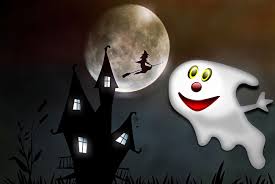Ghost rhymes have long been a captivating facet of human literary tradition. These haunting verses, with their eerie and supernatural themes, have held a profound sway over the human imagination for centuries. As we embark on this journey, we delve into the cryptic realms of ghostly poetry, where the boundaries between the living and the dead blur, and the macabre takes center stage.
Origins and Evolution of Ghost Rhymes
Ghost rhymes, also referred to as ghost poems or spectral verses, find their origins in ancient folklore and oral traditions. These narratives often functioned as cautionary tales, serving as warnings against venturing into the unknown or meddling with the supernatural. As societies progressed and embraced the written word, these narratives transitioned into written poetry, giving birth to the genre of ghost rhyme.
Themes Encompassed by Ghost Rhymes
Ghost rhymes encompass a spectrum of themes, each meticulously designed to invoke a sense of unease, fascination, and the supernatural. These themes include:
Apparitions and Specters: Many ghost rhymes revolve around chilling encounters with apparitions and spectral entities. Through vivid descriptions, they paint an unsettling picture of these ethereal beings, instilling both curiosity and dread.
Revenge and Retribution: Certain ghost rhymes narrate tales of vengeful spirits who return from beyond the grave to seek retribution for past wrongs. These narratives delve into themes of justice and karma in the afterlife.
The Unexplained and Mysterious: Ghost rhymes frequently delve into the realm of unexplained phenomena and enigmas. They beckon readers to contemplate the unknown and the supernatural, often leaving room for interpretation and speculation.
Death and the Afterlife: Death serves as a central theme in ghost rhymes. These verses ponder the transition from life to death and the enigmatic aspects of the afterlife, offering a tantalizing glimpse into the mysteries that lie beyond.
The Artistry Woven into Ghost Rhymes
What sets ghost rhymes apart is their capacity to evoke profound emotional responses through their adept use of poetic techniques and vivid imagery. These verses employ an array of literary devices to craft an atmosphere of suspense, fear, or melancholy. Some of the common techniques include:
Imagery: Ghost rhymes often employ vivid and unsettling imagery to create a striking portrayal of the supernatural. With dark and foreboding descriptions, they establish an eerie ambiance that lingers.
Symbolism: Symbols and metaphors are frequently woven into the fabric of ghost rhymes to convey deeper meanings. Objects, animals, and elements from nature may bear symbolic significance, often linked to death, the afterlife, or the spirit world.
Rhyme and Rhythm: As the name suggests, ghost rhymes rely on the interplay of rhyme and rhythm to amplify their impact. The musicality inherent in these verses creates a hypnotic and haunting effect that resonates with the reader.
Narrative Structure: Many ghost rhymes adopt a narrative structure, inviting readers to become entwined in a story that unfolds with each stanza. Suspense and surprise often play a pivotal role, intensifying the narrative’s grip on the imagination.
Ghost Rhymes in the Tapestry of Literature
Throughout the annals of literary history, ghost rhymes have etched their indelible mark across various cultures and epochs. A selection of notable examples includes:
Edgar Allan Poe’s “The Raven”: This iconic poem introduces readers to a mysterious raven that visits a grieving man, plunging him into madness with its haunting refrain of “Nevermore.”
William Shakespeare’s “Hamlet”: Though not a conventional poem, Shakespeare’s “Hamlet” features the spectral ghost of King Hamlet, who appears to his son, setting in motion a tragic sequence of events.
Samuel Taylor Coleridge’s “The Rime of the Ancient Mariner”: This extensive narrative poem explores themes of guilt, redemption, and the supernatural as a ghostly ship torments a mariner.
Japanese Hyakumonogatari Kaidankai: Within Japanese folklore, the Hyakumonogatari Kaidankai stands as a tradition where participants share ghost stories, extinguishing one hundred candles, and conjuring spirits with each eerie tale.
The Timeless Fascination with Ghost Rhymes
The enduring allure of ghost rhymes lies in their capacity to tap into our inexhaustible curiosity regarding the enigmatic and the afterlife. These verses beckon us to confront our deepest fears and grapple with the profound mysteries of existence. Whether transmitted through age-old folklore or contemporary poetry, ghost rhymes continue to enchant readers, preserving the spectral realm within our collective consciousness. In a world where the boundary between the living and the deceased remains veiled in mystery, ghost rhymes offer a tantalizing glimpse into the eerie and the enigmatic, serving as a haunting reminder that the supernatural always lurks on the periphery of our thoughts and dreams.
Conclusion
In exploring ghost rhymes, we ventured into a realm where the ethereal and the mundane meet, where the unknown beckons and the supernatural eludes understanding. These haunting verses, with their centuries-old origins and timeless themes, still resonate with our innate fascination with the mysterious and the otherworldly. Ghost rhymes act as poetic portals into the realm of mystery and wonder, from spectral encounters in dark corners to the echoing cries of vengeful spirits seeking justice. They are a testament to the enduring power of storytelling and the ability of words to weave intricate supernatural tapestries. As we navigate the winding corridors of literature, these verses are a constant reminder that the boundaries between the living and the dead are porous, the mysteries of existence remain, and the magic of the unknown forever beckons. In the haunting beauty of ghostly rhymes, we find an enduring connection to the deep, the eerie, and the mysterious—a connection that transcends time and place and binds us to a timeless fascination with spectrality and mystery.



